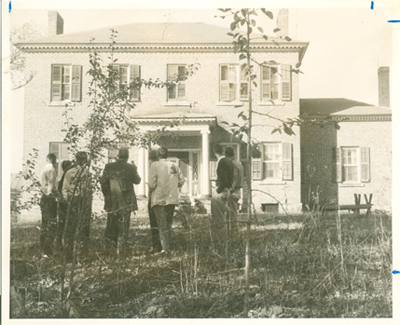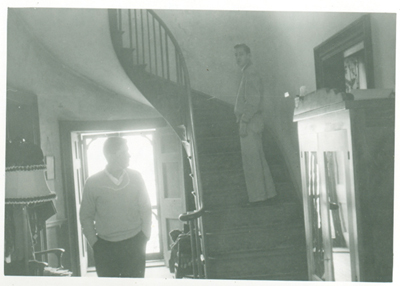Archives and Special Collections is developing a new crowd-sourcing project under the rubric of our recently launched Community Space website. The new project will be called Under Lake Norman and will focus on…you guessed it!–things that are under Lake Norman.
Specifically, the focus is on sites of some historical interest that were covered when the man-made lake was created between 1959 and 1964. We will post more on the project later, when it launches, but in the meantime we thought it might be nice to share the stories of a few underwater historic sites that we are researching for the project. Today, a brief history of Elm Wood Plantation.
Elm Wood was a, by all accounts beautiful, late Georgian style plantation house built by John Davidson Graham between 1825-1828. The house was situated on a hill above the Catawba river, near the end of present-day Ranger Island Road in Catawba Springs, NC.
John D. Graham was the son of Revolutionary War soldier and iron manufacturer, General Joseph Graham, and a member of one of North Carolina’s most distinguished families. His brother, William A. Graham was Governor of North Carolina (1845-1849), U.S. Senator, Secretary of the Navy, and the Whig nominee for Vice-President in 1852, and his maternal grandfather, John Davidson, was owner of the Rural Hill plantation (since burned).
Joe Graham, a descendant of John D. Graham, inherited Elm Wood and sold the house and hundreds of surrounding acres to Duke Power during the Great Depression. The Graham family received about $30,000 from the sale, and were allowed to continue living in the home for several decades, until the start of the Lake Norman project in 1959.
In an attempt to preserve the plantation house and save it from being covered by the coming lake, in 1960 Duke Power donated the house to Charles and Winifred Babcock of Winston-Salem. Babcock agreed to dismantle move the brick plantation house to his farm on Indiana Avenue in Winston-Salem, where it was to be reassembled and preserved.
About three months into the relocation project, in April 1961, there was a fire in the barn where the Babcocks were storing the interior components of the plantation house (which had been completely moved by then). With the house’s interior destroyed, the project was abandoned and what remained of the largely disassembled plantation house was left behind to be covered by the waters of Lake Norman.



Speak Your Mind